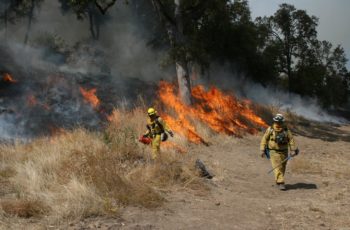In Lindstrom v. California Coastal Commission (2019) 40 Cal.App.5th 73, the Fourth District Court of Appeal partially reversed the trial court, finding the California Coastal Commission did not abuse its discretion when it imposed special conditions on a coastal development permit for a residential project proposed on a vacant lot in the City of Encinitas. The court found three of four conditions were consistent with the City’s local coastal program and within the Commission’s authority. The court rejected one condition because it was overbroad, unreasonable, and did not achieve the Commission’s purpose.
Background
In 2012, the Lindstroms applied for a coastal development permit with the City of Encinitas (City) to build a home atop a 70-foot high ocean-side bluff. To comply with the City’s Local Coastal Program (LCP), the permit application included a geotechnical report prepared by Geotechnical Exploration Inc. (GEI), an engineering firm hired by the Lindstroms. The LCP required the report to, among other things: (i) certify that the development would not endanger the bluff or require future bluff stabilization devices (i.e. coastal armoring or seawalls) based on a 1.5 safety factor over a 75-year time period, and (ii) calculate the minimum setback required for the development – a figure that could not be less than 40 feet. The GEI report concluded the proposed project could be built with a 40-foot setback without requiring bluff stabilizing measures in 75 years.
On May 2, 2013, the City’s planning commission approved the development permit with a condition requiring the Lindstroms to provide a letter stating the building could be removed in the event of endangerment. On May 28, 2013, GEI submitted a revised technical analysis which concluded the earlier report erred in calculating the development’s feasible setback. The new report stated the project would require a 72.25-foot setback, and proposed an alternate analysis based on the “natural angle of repose,” which would yield a 39.7-foot setback.
In June 2013, two Coastal Commission Commissioners appealed the City’s approval of the permit on grounds that it was inconsistent with the LCP. During the appeal process, the Lindstroms hired a second engineering firm, TerraCosta Consulting Group (TCG) and requested the Commission delay its decision. In October 2015, TCG prepared a new geotechnical report which concluded the slope would be safe with a 40-foot setback at a 1.29 safety level – a figure lower than the LCP-mandated 1.5 safety level.
The Coastal Commission heard the appeal in July 2016. As part of the appeal, a staff geologist concluded the proper setback should be 60 to 62 feet. The Commission agreed with the staff geologist, and approved the permit with four conditions. The first condition (“Condition 1.a”) required construction to adhere to a 60- to 62-foot setback. The second condition (“Condition 3.a”) prohibited all use of coastal armoring devices. The third condition (“Condition 3.b”) required removal of the home in the event a government agency deemed occupancy unsafe due to natural hazards. The fourth condition (“Condition 3.c”) imposed mandatory remediation measures that the landowners would be required to take in the event hazardous bluff conditions threatened the structure.
In August 2016, the Lindstroms filed a petition for writ of mandate challenging the Commission’s conditions of approval. The trial court partially granted the petition and found in favor of the Lindstroms as to the first and second conditions (Conditions 1.a and 3.a) but found the Commission did not abuse its discretion in imposing the third and fourth conditions (Conditions 3.b and 3.c). The Commission and the Lindstroms appealed.
The Fourth District’s Decision
The Court of Appeal for the Fourth District partially reversed the trial court’s holding. Relying on the plain language in the City’s LCP and the Coastal Commission’s authority to impose reasonable conditions so long as they are consistent with the Coastal Act and the LCP, the court found the Commission did not abuse its discretion when it imposed Conditions 1.a, 3.a, and 3.c. The court held the Condition 3.b, however, was improperly broad and not reasonably related to achieving the LCP’s purpose. That condition required that the Lindstroms remove their home in the event a government agency deemed it a natural hazard. That condition, the court said, was poorly drafted and could have been read to require the Lindstroms to remove their home under unreasonable circumstances. The court therefore issued a writ of mandate requiring the Coastal Commission to either delete or revise and clarify the condition.
Bridget McDonald


